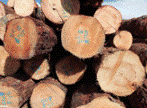
With an average return of 14.4% last year, the best for at least 13 years, the forestry sector is winning fresh converts among investors. “Forests play like a property asset, have commodity-like behaviour and a long-term history that allows you to predict returns – it looks like a 40-50 year gilt,” says Mark Campanale of Henderson Global Investors, quoted in the FT.
Timber has a low correlation with other asset classes and hasn’t been affected by the stockmarket downturn, says David Budworth in The Sunday Times. “The trees have never heard of the Nasdaq bubble… and they don’t know what a War on Terror is,” says Steve Sjuggerud on Dailywealth.com. Rising demand should be underpinned by China’s booming economy, keeping prices robust. The UN Food and Agriculture Organisation predicts world consumption of industrial roundwood will rise 60% over the next 25 years.
The newcomers join longstanding fan Jeremy Grantham, chairman of investment firm GMO. A persistent “stockmarket Cassandra”, he recently said that timber remains his favourite asset class and he forecasts it will be top performer over the next seven years. According to Grantham, over the past century the price of wood has averaged an annual increase of 6%. Stumpage prices – the value of all wood on the stump – has outpaced inflation by 3% a year.
British investors may regard forestry as an exotic investment, but it is fast becoming mainstream in the US, says Budworth. For example, Harvard University plans to earmark 10% of its $26bn investment fund to timber. The two biggest US timber producers, Rayonier (RYN) and Plum Creek Timber (PCL), have proved very popular with investors in recent years, managing double and triple-digit stock-price gains in the post-dotcom boom era, against a decline for the S&P 500.